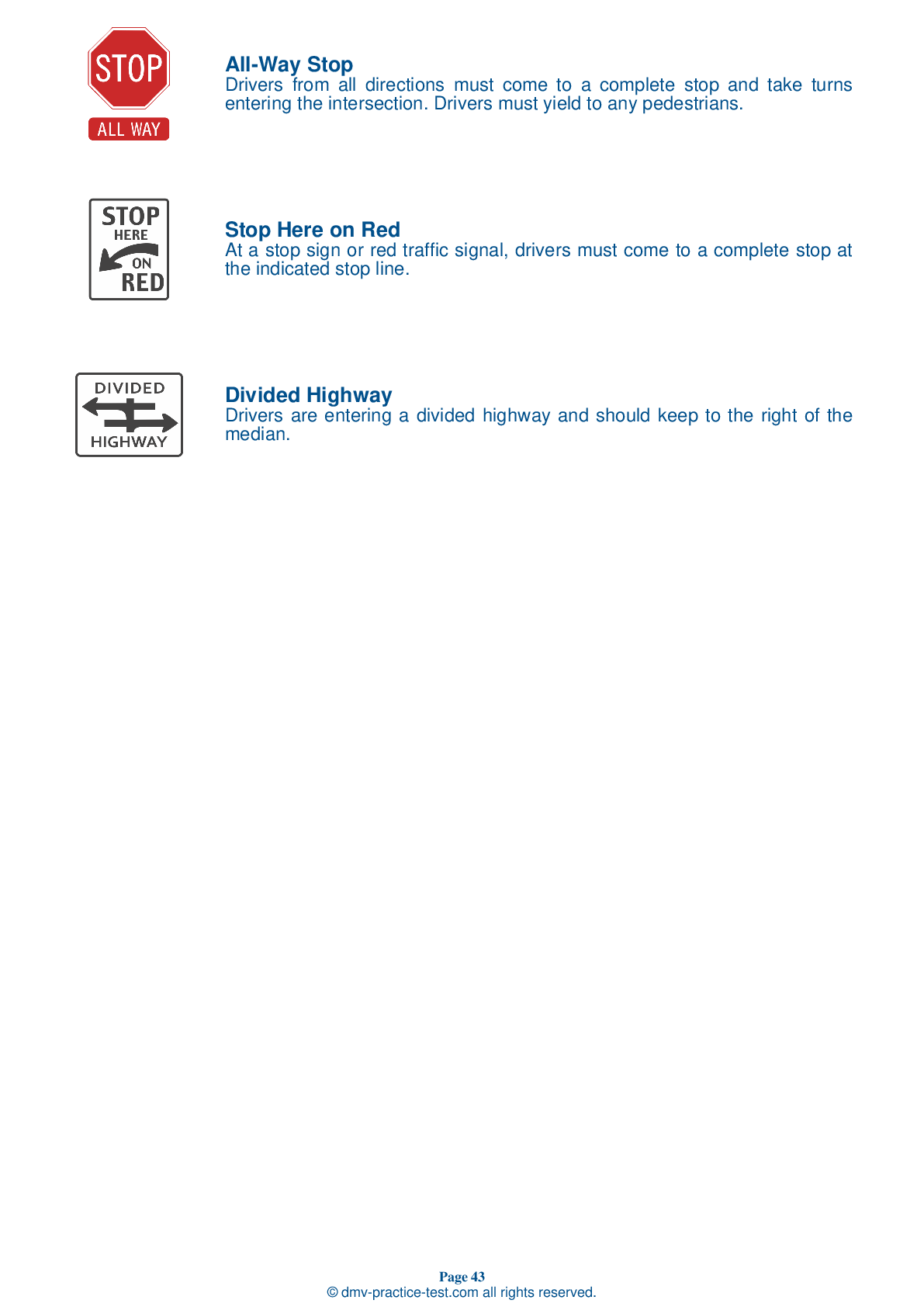FREE Connecticut DMV Practice Test #22 Page 2 of 3
This set of Connecticut DMV practise tests was just updated for January 2026. It includes questions based on the Connecticut Driver Handbook's most essential traffic signs and regulations for 2026. Use actual questions that are very similar (often identical!) to the DMV driving permit test and driver's licence exam to study for the DMV driving permit test and driver's licence exam.
Each practise test question has a hint and explanation to assist you in remembering the concepts. The written component of the official DMV test will include questions about road rules, traffic signs, and driving statutes, as well as information from the Driver Handbook.
To achieve the required passing grade, you must correctly answer 20 of the 25 questions. Take our DMV practise exam to help you prepare for your Connecticut instruction permit or driver's licence.
The DMV exam is available in several languages.
Using any form of testing help will result in an automatic fail, and the DMV may take further action against your driver's licence, so avoid it.
9 . Slowing down just to look at collisions or anything else out-of-the-ordinary:
Avoid "rubbernecking," or slowing down to look at collisions or anything else out-of-the-ordinary. This helps to relieve traffic congestion.
10 . This sign means:

A round sign always indicates that you are approaching a railroad crossing.
11 . What message will be found on this yellow pennant-shaped sign?

Pennant-shaped yellow signs like this are used to indicate a no passing zone.
12 . If a tire blows out, you should:
If a tire suddenly blows out while you are driving, hold the steering wheel tightly and keep the vehicle going straight.You should slow down gradually, taking your foot off the gas pedal and using the brakes lightly. Do not stop on the road if at all possible. Pull off the road in a safe place.
13 . There is no crosswalk and you see a pedestrian crossing your lane ahead. You should:
At an intersection where traffic is not controlled by traffic signal lights, drivers are required to yield the right-of-way to pedestrians within any crosswalk, marked or unmarked. Even if there is no crosswalk, yield to the pedestrian.
14 . When you see this sign, you:

This sign indicates that you are approaching a railroad crossing. You must look, listen, slow down, and prepare to stop. Wait for any trains to pass before you proceed.
15 . When you are behind a motorcycle, you should:
When following a motorcyclist, allow for at least a three- to four-second following distance. Motorcycles can stop quickly and following them too closely endangers your life and that of the motorcyclist. If the motorcyclist should fall, you need extra distance to avoid the rider. The chances of a fall are greatest on wet and icy roads, gravel roads, and metal surfaces such as bridges, gratings, and streetcar or railroad tracks.
Need Car Insurance? No problem!
Compare the best rates in Connecticut and find a personalized policy that meets your needs.
1. Are You Currently insured ?
2. Married ?
3. Do you own your Home?
4. Do you have more than 1 car ?
5. Have you or a Family Member Honorably Served in U.S. Military ?
6. Your Name
7. Age
8. Zip code
IMPORTANT REMINDER:Auto Insurance is Mandatory to drive in Connecticut. Get covered before you hit the road to avoid any fines.
Ranked by best match



